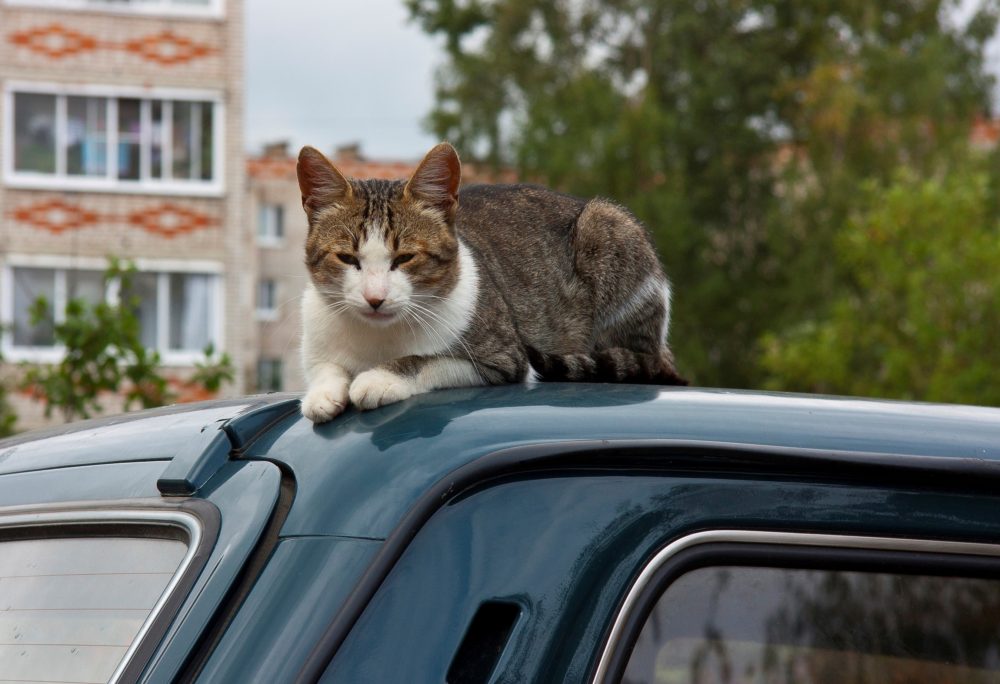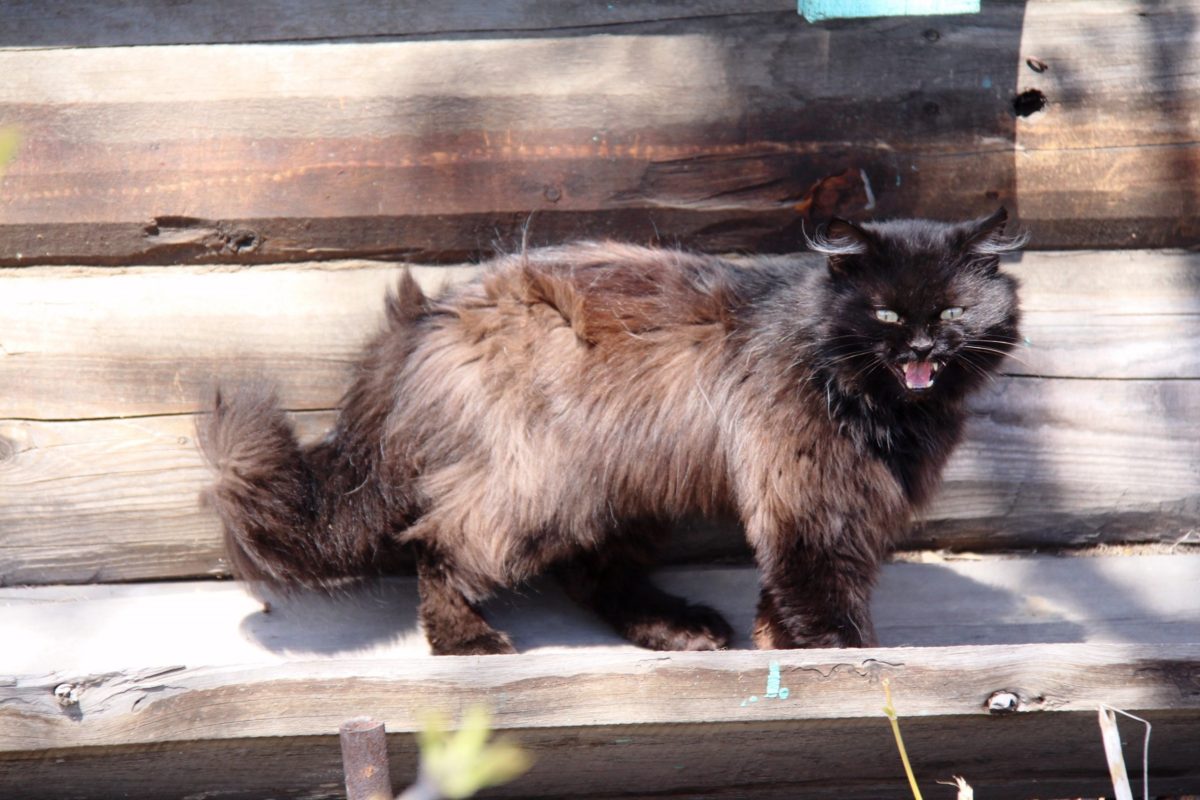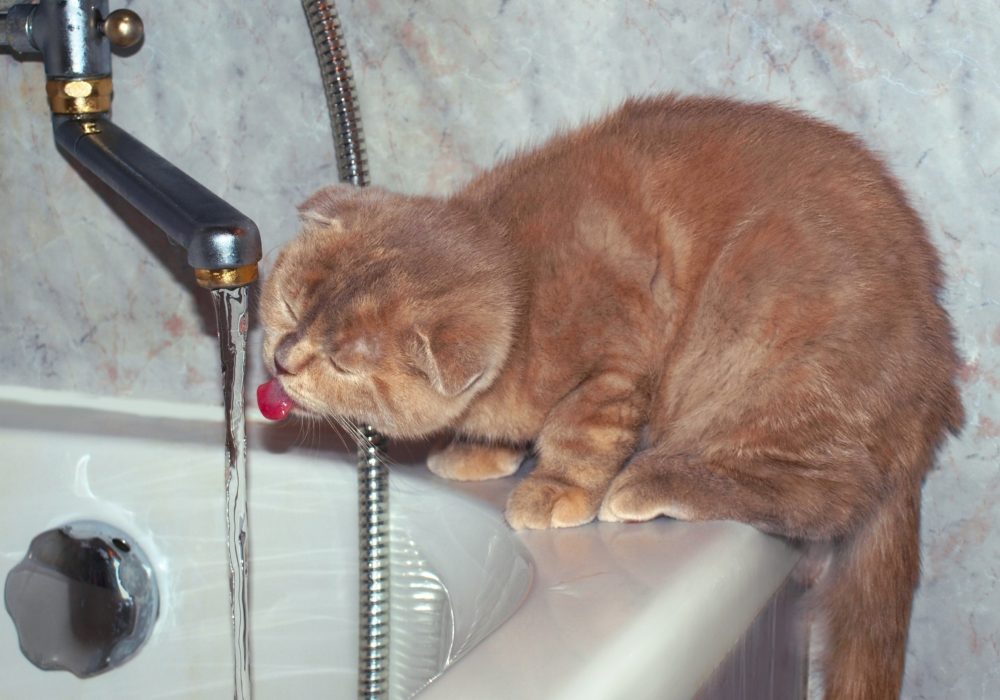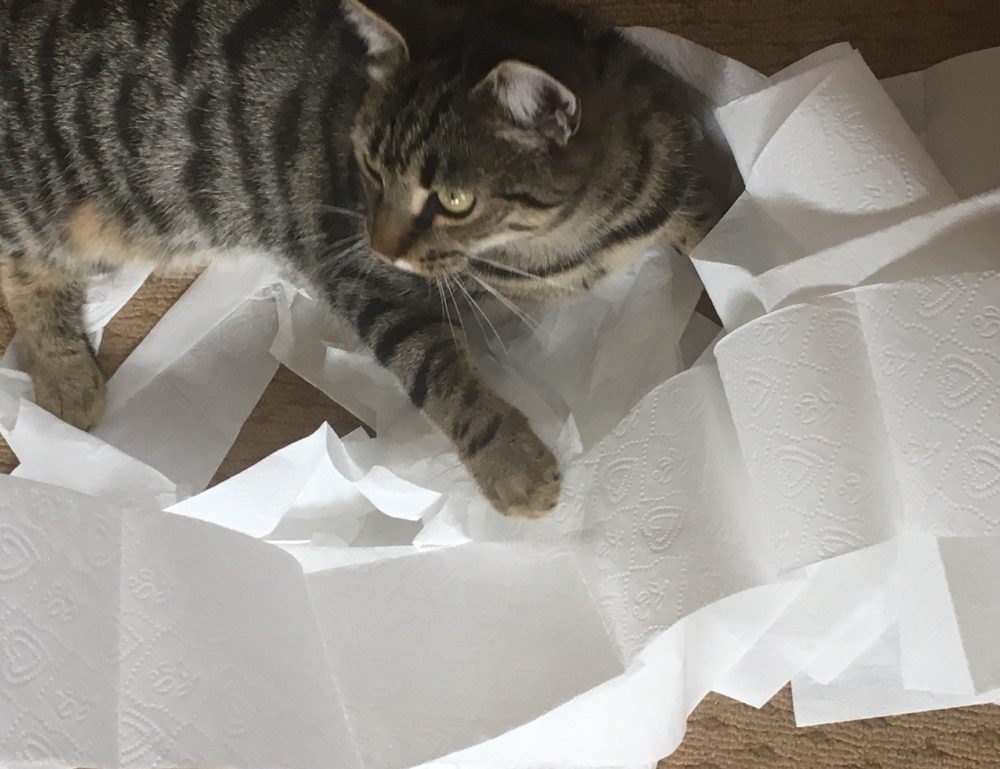
8 common toileting problems in cats – and how to solve them!
Urination and defecations are normal functions in all animals. This process ensures bodily fluids and wastes are eliminated from the body in order to keep healthy. It’s also a way for cats to mark their territory, as well as spraying, letting other cats know that this area belongs to them! But every now and then this process can cause problems when illnesses or issues that causes stress or anxiety arise. Here we will look at some common problems and steps that can be taken to solve the problem.
If any of the following problems apply to you, of you have any concerns or changes in your cat’s toileting problems, your first port of call should be a visit to your vet to identify or rule out any medical causes.
The 8 common toileting problems addressed in this article will be
- My cat is defecating outside the door
- My cat is toileting in indoor plants
- My cat refuses to use the litter box
- My cat urinates on my bed
- My elderly cat is toileting outside the litter box
- My cat sprays on my shopping bags
- My cat sprays on the curtains
- My cat attacks the toilet paper
1. My cat is defecating outside the door
If your cat is suddenly depositing faeces away from her litter box, or away from her normal toileting area, with no attempt to cover it up, this is known as ‘middening’. It is a form of marking – ‘non-spray marking’. Your cat may start doing this when she feels threatened or challenged, or when new and unfamiliar scents are bought in through the doorway. This behaviour is her way to mark her territory in this new and challenging area. If you have more the one cat this could be their way of communicating to the other that this particular area is their space.
To discourage this behaviour, try the following steps:
- Remove shoes by the door to avoid bringing in unfamiliar challenging scents into the house.
- Remove any initial threats by covering cat flaps and blocking out nearby window.
- Are there any recent changes, such as a new baby, building work on the house etc that could trigger this? Confine your cat to a smaller area just to help her feel safer and more secure then gradually reintroduce her to the other areas in your house.
2. My cat is toileting in indoor plants
The soft soil in a potted plant, indoors or outdoors, can seem the perfect location for your cat to use as a toilet. To prevent this, try the tips below:
- Re-pot any used soil using new, fresh soil. This is key to prevent it happening again as cats like to over-mark areas they have already used. Using a fragrant soil may make it less appealing for your cat to use.
- Cover the soil of the pot plant with pebbles, shells or pinecones. With no soil easily accessible to cover their faeces they will soon lose interest.
- Chicken wire can be used to cover plants making the soil totally inaccessible.
- Spray the soil with cat repellent. There are various liquid repellent available to buy or try making your own. An easy homemade repellent to try is to mix peppermint, lemon or eucalyptus oil with water in the ratio of one-part juice to three parts water. Bear in mind what is a repellent for one may not work for another! Spray the soil often to keep the odour fresh.
- Try moving your pot plants into a more inaccessible location such as on a high shelf. It may be a deterrent if the pots are not easy to access.
- Train your cat to know where is acceptable to go. Place any faeces from the pot plant into the litter tray and place the litter tray close to the pot plant. Pick your cat up and put her near the tray.
3. My cat refuses to use the litter tray
Once any medical issues have been eliminated there are several things to try to ensure your cat uses the litter box. Cats are indeed quite fussy creatures and will not use anything that displeases them! Try the following tips:
- If you’ve changed the brand of litter, it may be a simple case of reverting back to the preferred old brand! Generally, cats tend to prefer fine-grain, unscented litter.
- Cats are very clean animals, ensure your cat’s litter box ix clean. Scoop soiled litter and solid waste at least once a day, if your cat is particularly fussy, you may need to do this more often. Change the litter weekly. Do not use bleach or strong-smelling detergent to wash the litter box as this may be a deterrent for your cat too.
- Cats are very territorial by nature and don’t usually like to share their litter box. Therefore if you have more than one cat ensure they have at least one litter box each plus one extra.
- The location of the litter box can be an important factor for your cat. Do not place the litter box too close to their food and water as cats don’t like to eat and perform their toilet duties in the same area. Make sure it is in an easily accessible area, and in a quiet, private location.
- Consider the size, shape and depth of your litter box. While some cats prefer a hooded litter box for privacy, others prefer an open litter tray. Ensure the tray is large enough for your cat. A large cat will need plenty of room to manoeuvre and if using a hooded box, ensure the hole is large enough for her to get in and out easily. An elderly cat, or a cat with arthritis or a mobility issues, will maybe need a box with low sides. You could even provide a little ramp to access the box. Providing various littler box options will soon reveal what your cat’s preferences are.
- Some cats dislike litter box liners. If you see your cat scratching at the liner or pulling the liner away, simply stop using the liners.
- Any environmental changes can trigger your cat to stop using the litter box. A new baby, a new pet or a new house can trigger anxiety and uncertainty in your cat. Plenty of reassurance, some tasty treats and ensuring the litter box is kept extra clean should help to reassure your cat and revert to normal litter box use.
- Cats use elimination of urine (and sometimes faeces) for communicating and can be the first and most obvious indicator that something is not right in their world. It may take a few attempts to work out what exactly the problem is. It will require patience on your part. Shouting or punishment when litter box problems arise will not solve the problem, indeed it will probably make the situation worse. Your cat needs to feel secure and safe around you, and in her home environment.
4. My cat urinates on my bed
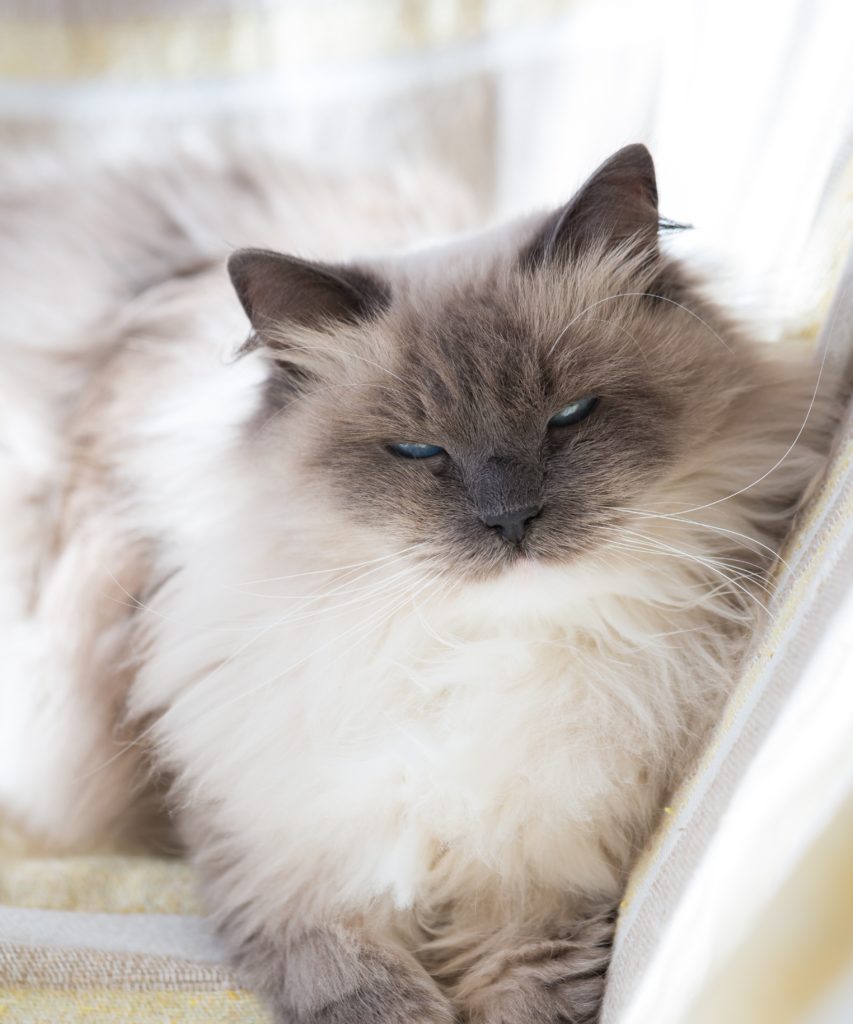 A new pet, a new house mate or partner can unsettle your cat. Such changes can prompt your cat to display her uncertainty or anxiety regarding the new arrangements by urinating on your bed. As with all behavioural and anxiety-based problems, punishment will only increase your cat’s nervousness and uncertainty. Firstly, this has not been done out of spite or hatred towards you. This is more likely to be the action of a nervous or anxious cat. If you work long hours or travel away often then it is possible that your cat has reacted to this by seeking areas that have the strongest smell of you. Urinating on your smell helps to associate her smell and yours to deal with the uncertainty of being home alone and separated from you. As well as the tips in point 3 above in reviewing the litter box situation, try the following tips too:
A new pet, a new house mate or partner can unsettle your cat. Such changes can prompt your cat to display her uncertainty or anxiety regarding the new arrangements by urinating on your bed. As with all behavioural and anxiety-based problems, punishment will only increase your cat’s nervousness and uncertainty. Firstly, this has not been done out of spite or hatred towards you. This is more likely to be the action of a nervous or anxious cat. If you work long hours or travel away often then it is possible that your cat has reacted to this by seeking areas that have the strongest smell of you. Urinating on your smell helps to associate her smell and yours to deal with the uncertainty of being home alone and separated from you. As well as the tips in point 3 above in reviewing the litter box situation, try the following tips too:
– Ensure your bedroom door is closed whilst you are out of the house.
– To increase her sense of security, reduce the access area whilst you are out. Ensure her favourite things are with her to promote the feeling of safety and comfort.
5. My elderly cat is toileting outside the litter box
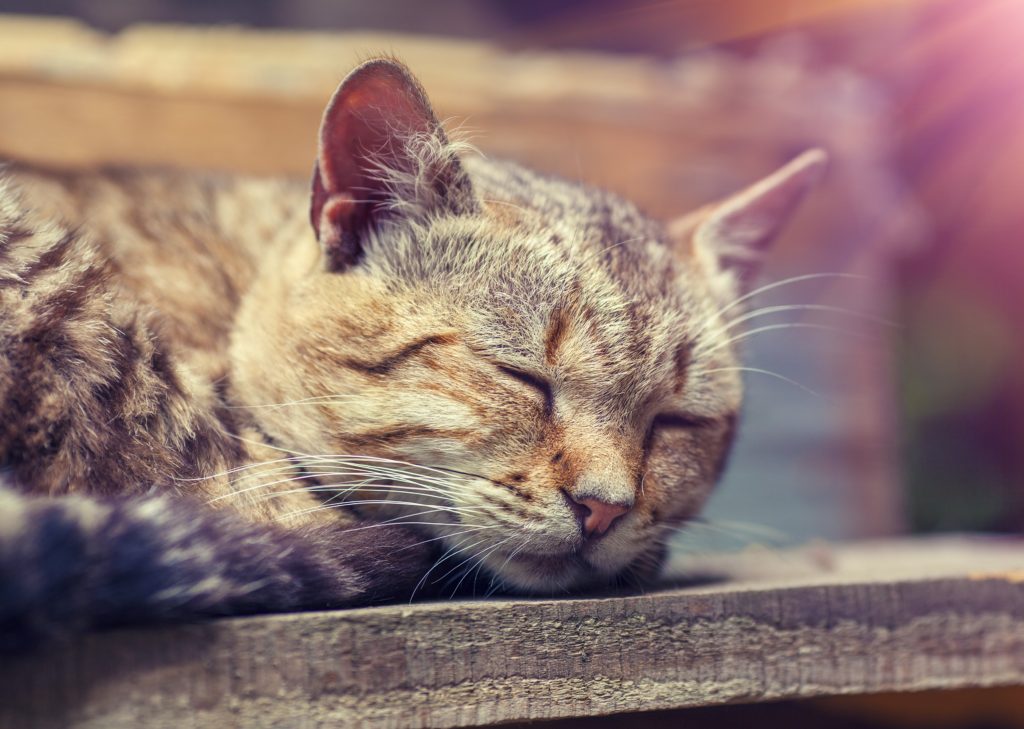 Sadly, litter box issues are quite common in elderly cats. It is essential with elderly cats to visit your vet to identify any medical problems. The following steps may help your cat in the later years:
Sadly, litter box issues are quite common in elderly cats. It is essential with elderly cats to visit your vet to identify any medical problems. The following steps may help your cat in the later years:
– If mobility has become an issue for your cat, due to arthritis or stiffness, a litter box with high sides may have become too difficult to climb into. Simple replace with litter boxes that have lower sides making it easier to access. Ensure there is a litter box on every floor of the house in case getting up and down the stairs is becoming difficult.
– If your cat has bladder control problems, placing additional litter boxes, in easy to access areas, will ensure there is always a litter box nearby.
– Cats do not like a dirty litter box and becoming elderly very often results in your cat going to the toilet more often. Simply cleaning the litter tray more often may avoid your cat seeking elsewhere as the litter box.
– Older cats can become less tolerant to changes. Insecurity and sudden changes may trigger litter box problems. Ensure any changes are introduced slowly and sensitively bearing in mind your elderly cat.
Please see our article for a complete guide on how to make the senior years more comfortable for your older cat.
6. My cat sprays on the curtains
It is completely normal for all cats, male and female, to spray outdoors. Cats spray in order to feel secure and to mark their territory. Therefore, spraying indoors is not a usual habit as your cat will usually feel safe and secure at home. Any anxiety, perceived threats or insecurity may result in your cat spraying indoors to boost her confidence. Spraying on the curtains in particular is usually a sign of a threat from outside, very likely to be a neighbouring cat. Try the following tips:
- If you catch your cat spraying, do not punish or be cross. Safety and reassurance are what she is seeking, punishing her will only make the problem worse.
- For a short period, restrict outside access and block the view from the window. Opaque window sprays are readily available and can be ideal for this purpose.
- Provide your cat with extra play time and activity feeders to keep her distracted and occupied.
- Using a pheromone diffuser can help to calm your cat. Pheromones are chemicals that the body releases when a cat is happy or sad to communicate with other cats and the outside world. For example, when cats rub against their owners, or furniture, they are leaving a small portion of this pheromone behind. This can be detected by other animals and used to mark territory. Some diffusers contain calming pheromones. This diffuser is simply plugged into your home to release the spray to enhance calmness.
- Create an area, a core area, where she feels secure. Ensure she has her toys, basket, bowls here to reinforce the feeling of security and safety.
- Clean any marked areas. You will need an enzymatic cleaner to remove the spray. Using water or household cleaners alone won’t get the area clean since you need enzymes to break down the components break down the components of cat urine.
7. My cat is spraying on my shopping bags
There seems to be two reasons for this:
- some cats seem particularly fond of plastic and plastic bags, and
- the sudden appearance of shopping bags can upset a nervous or anxious cat together with the new unfamiliar smells of the outside world.
Your cat may then spray to demonstrate that these bags are her territory.
A few simple changes should soon remedy this problem:
- Shouting or punishing your cat will certainly not solve the problem, in fact it will probably exaggerate the issue.
- Get rid of any shopping bags that she has sprayed on.
- Move your cat to another room whilst you bring in the shopping packs and whilst unpacking them.
- In order to make your cat feel more secure and safer, provide extra hiding places and high up places to rest.
- Use a pheromone diffuser to calm your cat. See point 6 above how a pheromone diffuser can help.
8. My cat attacks the toilet paper
 This game of unravelling and shredding the toilet paper is simply a fun game to a cat, possible due to boredom or under stimulation. They sometimes used the toilet roll as a scratching post substitute. This problem can easily be remedied by:
This game of unravelling and shredding the toilet paper is simply a fun game to a cat, possible due to boredom or under stimulation. They sometimes used the toilet roll as a scratching post substitute. This problem can easily be remedied by:
- Ensuring the bathroom door is closed.
- Provide activity feeders and interactive toys to stimulate your cat’s playful side. See our article on feeding on quick and easy activity feeders you can make yourself.
- Play with your cat for 10-15 minutes, again to keep her stimulated and meet her playful needs.
- Position the paper roll so it unrolls from the bottom and not up over the top. That will prevent it from unravelling.
- Before you replace the new toilet roll, squeeze it so the cardboard insert isn’t perfectly round. Doing this means it won’t spin so quickly and not so easy to unravel for your mischievous cat.
- There are also various child proof toilet paper covers readily available on the market. Some only allow a few sheets to be dispenses at a time and others have covers which have to be lifted to access the toilet paper.
Other articles you may find of interest:
8 common feeding problems in cats and how to solve them
16 Top tips to ensure the senior years are comfortable for your old cat
Natural and alternative healing for cats – an introductory guide
